| |||
|---|---|---|---|
| +... |
| Years in film |
|---|
 |
| 19th century |
| 1870s |
The following is an overview of the events of 1891 in film, including a list of films released and notable births.
| |||
|---|---|---|---|
| +... |
| Years in film |
|---|
 |
| 19th century |
| 1870s |
The following is an overview of the events of 1891 in film, including a list of films released and notable births.
| Month | Date | Name | Country | Profession | Died | |
| January | 15 | Arne Weel | Denmark | Actor, director | 1975 | |
| February | 7 | Ann Little | US | Actress | 1984 | |
| 9 | Ronald Colman | UK | Actor | 1958 | ||
| 26 | Alan Bridge | US | Actor | 1957 | ||
| March | 6 | Victor Kilian | US | Actor | 1979 | |
| 6 | Lidia Quaranta | Italy | Actress | 1928 | ||
| 8 | Sam Jaffe | US | Actor | 1984 | ||
| 11 | Gertrud Wolle | Germany | Actress | 1952 | ||
| 31 | Victor Varconi | Hungary | Actor | 1976 | ||
| April | 2 | Jack Buchanan | Scotland | Director, writer, actor | 1957 | |
| 10 | Tim McCoy | US | Actor, soldier | 1978 | ||
| 15 | Wallace Reid | US | Actor | 1923 | ||
| 23 | Sergei Prokofiev | Russia | Composer | 1953 | ||
| May | 13 | Fritz Rasp | Germany | Actor | 1976 | |
| June | 24 | Philippe Richard | France | Actor | 1973 | |
| July | 18 | Gene Lockhart | Canada | Actor | 1957 | |
| 23 | Harry Cohn | US | Co-founder of CBS Sales Association (Columbia Pictures) | 1958 | ||
| 28 | Joe E. Brown | US | Actor, Comedian | 1973 | ||
| 28 | Richard "Skeets" Gallagher | US | Actor | 1955 | ||
| August | 4 | Margit Makay | Hungary | Actress | 1989 | |
| 11 | Helen Broderick | US | Actress | 1959 | ||
| 28 | Stanley Andrews | US | Actor | 1969 | ||
| November | 10 | Philip Sainton | France | Composer | 1967 | |
| 18 | Vasil Gendov | Bulgaria | Actor, director, screenwriter | 1970 | ||
| 20 | Reginald Denny | UK | Actor, aviator | 1967 | ||
![]() Media related to 1891 in film at Wikimedia Commons
Media related to 1891 in film at Wikimedia Commons
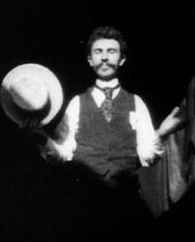
William Kennedy Laurie Dickson was a British-American inventor who devised an early motion picture camera under the employment of Thomas Edison.
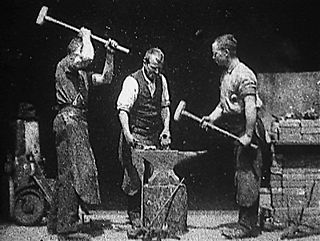
Blacksmith Scene is an 1893 American short black-and-white silent film directed by William K.L. Dickson, the Scottish-French inventor who, while under the employ of Thomas Edison, developed one of the first fully functional motion picture cameras. It is historically significant as the first Kinetoscope film shown in public exhibition on May 9, 1893, and is the earliest known example of actors performing a role in a film. It was also the first U.S. motion picture film ever copyrighted that same year. 102 years later, in 1995, Blacksmithing Scene was selected for preservation in the United States National Film Registry by the Library of Congress as being "culturally, historically, or aesthetically significant". It is the second-oldest film included in the Registry, after Newark Athlete (1891).
The following is an overview of the events of 1895 in film, including a list of films released and notable births.
The following is an overview of the events of 1894 in film, including a list of films released and notable births.
The following is an overview of the events of 1892 in film, including a list of films released and notable births.
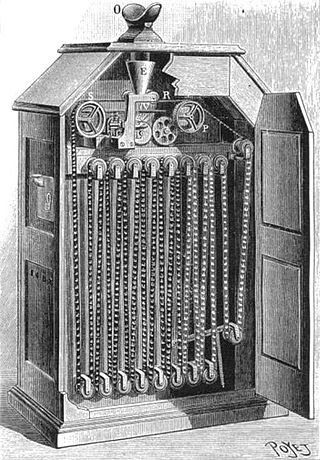
The Kinetoscope is an early motion picture exhibition device, designed for films to be viewed by one person at a time through a peephole viewer window. The Kinetoscope was not a movie projector, but it introduced the basic approach that would become the standard for all cinematic projection before the advent of video: it created the illusion of movement by conveying a strip of perforated film bearing sequential images over a light source with a high-speed shutter. First described in conceptual terms by U.S. inventor Thomas Edison in 1888, it was largely developed by his employee William Kennedy Laurie Dickson between 1889 and 1892. Dickson and his team at the Edison lab in New Jersey also devised the Kinetograph, an innovative motion picture camera with rapid intermittent, or stop-and-go, film movement, to photograph movies for in-house experiments and, eventually, commercial Kinetoscope presentations.

Dickson Greeting is an 1891 American short silent film. Directed, produced by, and starring motion-picture pioneer William K. L. Dickson, it displays a 3-second clip of him passing a hat in front of himself, and reaching for it with his other hand. It was filmed on May 20, 1891 in the Photographic Building at Edison's Black Maria studio, West Orange, New Jersey, in collaboration with Thomas Edison using his kinetograph. The film was played for viewers at the National Federation of Women's Clubs, one of the first public presentations of a motion picture.
The following is an overview of the events of 1893 in film, including a list of films released and notable births.

The Black Maria was Thomas Edison's film production studio in West Orange, New Jersey. It was the world's first film studio.
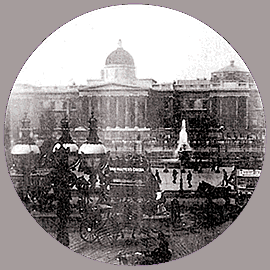
The following is an overview of the events of 1890 in film, including a list of films released and notable births and deaths.

Edison Studios was an American film production organization, owned by companies controlled by inventor and entrepreneur, Thomas Edison. The studio made close to 1,200 films, as part of the Edison Manufacturing Company (1894–1911) and then Thomas A. Edison, Inc. (1911–1918), until the studio's closing in 1918. Of that number, 54 were feature length, and the remainder were shorts. All of the company's films have fallen into the public domain because they were released before 1928.

Monkeyshines is a series of experimental short silent films made to test the original cylinder format of the Kinetoscope, and are believed to be the first films shot in the United States.
The decade of the 1890s in film involved some significant events.

Corbett and Courtney Before the Kinetograph is an 1894 American short black-and-white silent film produced by William K.L. Dickson and starring James J. Corbett. It was only the second boxing match to be filmed, following The Leonard-Cushing Fight which had been filmed by Dickson on June 14, 1894.
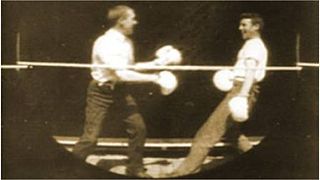
Men Boxing is an 1891 American short silent film, produced and directed by William K. L. Dickson and William Heise for the Edison Manufacturing Company, featuring two Edison employees with boxing gloves, pretending to spar in a boxing ring. The 12 feet of film was shot between May and June 1891 at the Edison Laboratory Photographic Building in West Orange, New Jersey, on the Edison-Dickson-Heise experimental horizontal-feed kinetograph camera and viewer, through a round aperture on 3/4 inch (19mm) wide film with a single edge row of sprocket perforations, as an experimental demonstration and was never publicly shown. A print has been preserved in the US Library of Congress film archive as part of the Gordon Hendricks collection.

Annie Oakley is an 1894 American black-and-white silent film from Edison Studios, produced by William K. L. Dickson with William Heise as cinematographer.
Antonia Isabella Eugénie Dickson was a writer, lecturer, music composer, and concert pianist. With her brother, William Kennedy Dickson, she authored the History of the Kinetograph, Kinetoscope, and Kinetophonograph, considered the first book on the history of film, and a biography of Thomas Edison.

The Leonard–Cushing Fight is an 1894 American short black-and-white silent film produced by William K.L. Dickson, starring Mike Leonard and Jack Cushing. Leonard and Cushing participate in a six-round boxing match under special conditions that allow for it to be filmed and displayed on a Kinetograph. The film was shot on an uncertain date between May 24 and June 14, 1894, in a specially configurated ring in Edison's Black Maria film studio in West Orange, New Jersey. Premiered on August 4, 1894 in Manhattan, the movie is the first sports film ever released. As of 2023, no full print of the film is known to have survived, making it a partially lost film. A 23-second fragment is available at the Library of Congress.

The Boxing Cats , or simply Boxing Cats, is an 1894 American short silent film directed by William K.L. Dickson and William Heise, and starring Henry Welton. It depicts a boxing match between two cats, each wearing a pair of boxing gloves. The two cats were members of Welton's touring "cat circus", which reportedly also featured cats riding bicycles.